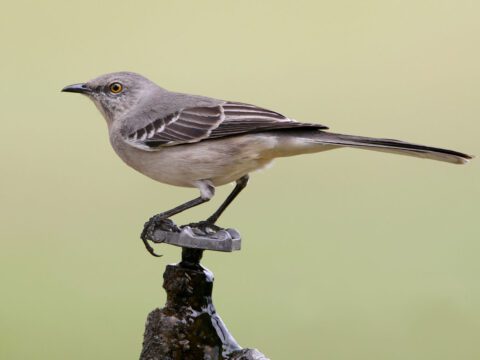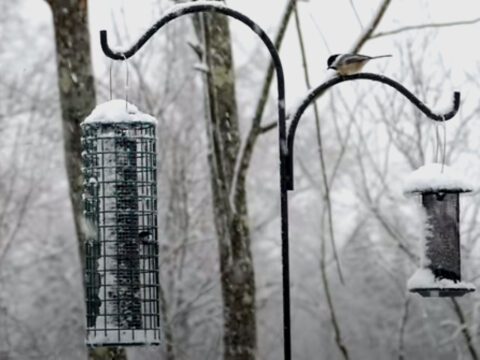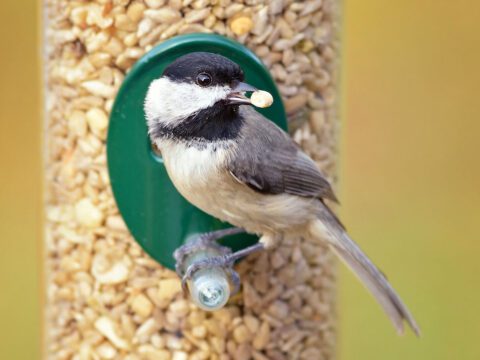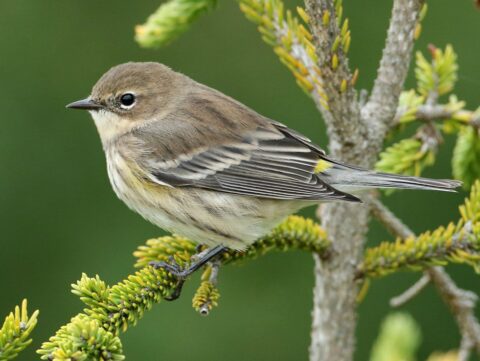Don’t Touch that Field Guide! Learning to Observe
By Carly Hodes
April 15, 2010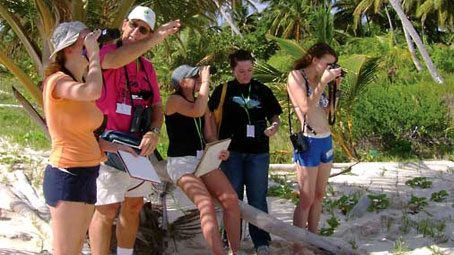
Few things excite a birder more than travelling to an exotic new place to discover a rich diversity of wildlife. Yet even for seasoned explorers, facing a large number of unfamiliar birds can be overwhelming. How do you know where to start?
Every January, André Dhondt, the Cornell Lab of Ornithology’s director of Bird Population Studies, takes a dozen students to the Dominican Republic for an intensive two-week course in tropical field ornithology (photo above). With more than 300 species and 30 endemics, the island of Hispaniola provides a fertile training ground for novice birders to build their knowledge and skills.
I attended this course in 2010. The day I arrived my vision overflowed with new shapes and colors: vivid flashes flitting through alien foliage; birds skimming across the waves, marching down the tide-lines, wheeling in the sun, and trafficking in and out of the palm-thatched roofs. In the time it took to walk from the research station gardens to the turquoise-tinged beach, the number of unfamiliar birds grew so quickly that I could barely process all I had seen. Flipping through a guide and trying to match names to the mess of snapshots in my head only made things more confusing. With so many new birds around, how could I possibly begin to recognize and appreciate them?
André’s method is simple: close the book and open your eyes. Running to the guide won’t help before you’ve taken the time to observe. For the first few days, the only books we touched were sketchbooks. Every time we saw a new bird, we sat down to draw it. No great artistic feats were required: a silhouette is often the best way to learn to recognize any animal, and sketching a simple contour goes a long way. Few things hone our powers of observation more than drawing to get a sense of a bird’s shape and proportions, colors, patterns, and distinctive marks.
Such close observation was particularly useful when comparing similar birds. In that mixed flock of large white birds fishing by the pond, which ones have yellow bills and which have black? What color are their legs? Which are bigger? We may recognize a cuckoo in a mangrove tree, but several similar species inhabit this island. Are this one’s eyes black or red? Is it at the top of the canopy or in the denser middle foliage? Is it eating a lizard? Noting habitat and behavior goes beyond identification to give us a deeper understanding of the birds we watch, their communities, ecosystems, and lives.
Filling our sketchbooks with drawings and field notes, we returned to the classroom with strong memory aids, able to describe in detail all we had seen. As we shared and cross-checked our observations, our bank of knowledge mushroomed. After three days of just watching, sketching, and taking notes, we finally opened the guide to discover that we already knew much of what it offered.
Next time you venture into an unknown pocket of the world, try using a sketchpad for a day or two. A field guide will tell you identifying features and names, but nothing is more effective and rewarding than exercising the powers of your own eyes.
Carly Hodes is a Cornell undergraduate and Bartels Science Illlustration Intern.
Originally published in the Spring 2010 issue of BirdScope.

All About Birds
is a free resource
Available for everyone,
funded by donors like you
American Kestrel by Blair Dudeck / Macaulay Library

